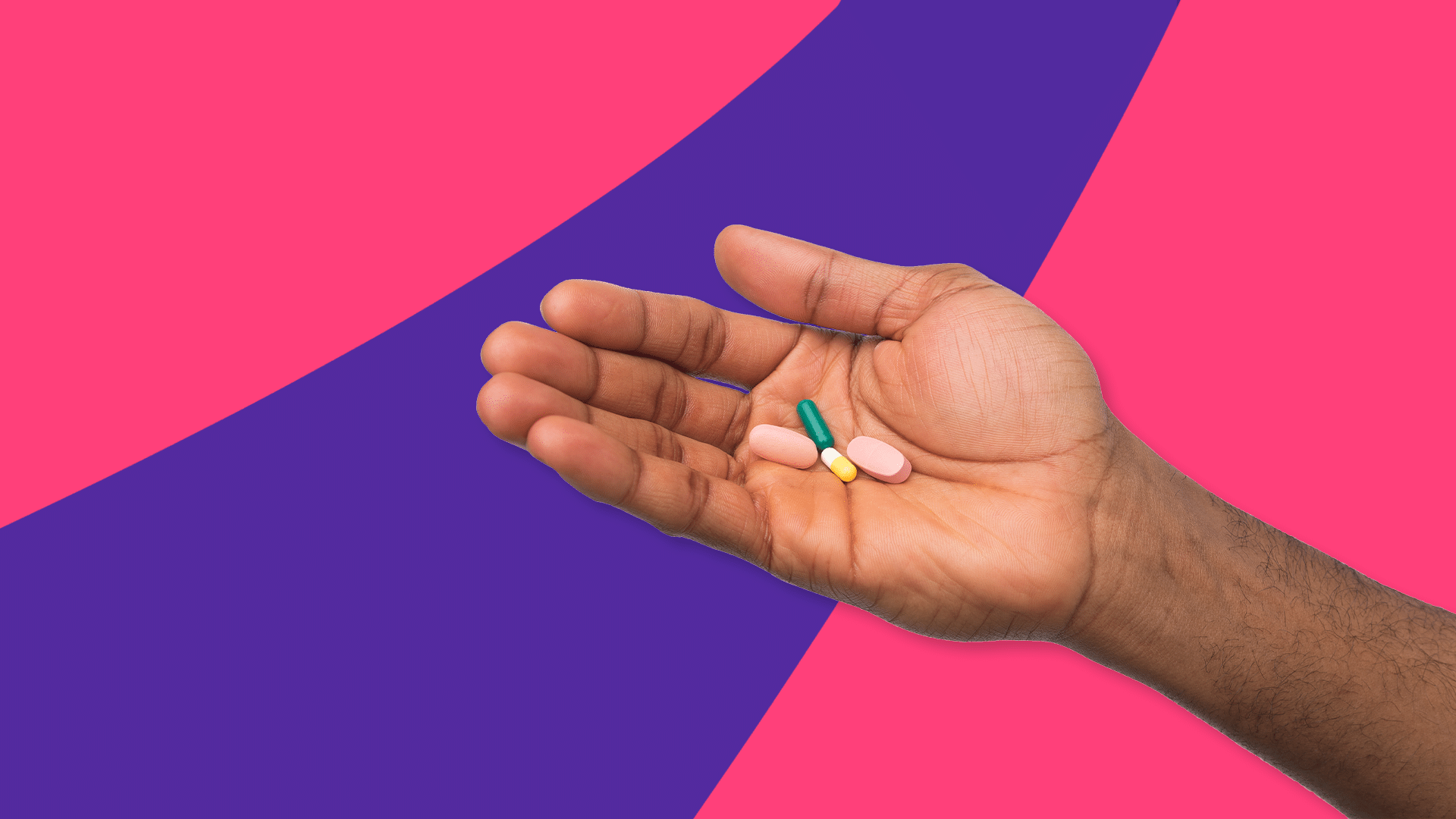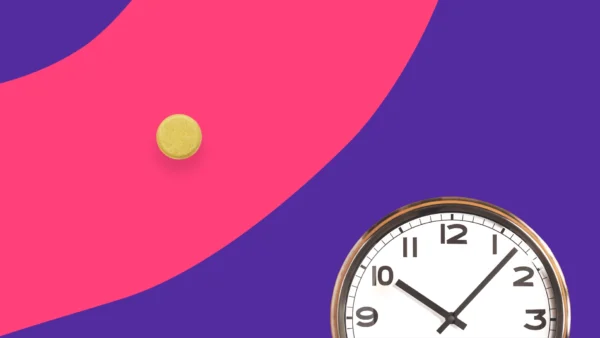Top Januvia alternatives | Comparison | Tradjenta | Metformin | Jardiance | Victoza | Ozempic | Natural alternatives | How to switch meds
Januvia is a prescription medication used along with diet and exercise to improve blood glucose (blood sugar) control in adults with Type 2 diabetes (T2D, also known as Type 2 diabetes mellitus). Januvia is a brand-name medication made by Merck. A generic is not available at this time.
Januvia contains the ingredient sitagliptin. It is categorized in a drug class called dipeptidyl peptidase-4 (DPP-4) inhibitors. DPP-4 inhibitors work by helping the body make more insulin, which helps move sugar from the blood into the tissues, where it can be used for energy. This helps keep blood sugar levels steady. Januvia may be taken alone or in combination with other medications for Type 2 diabetes.
In some cases, patients may be looking for alternative diabetes treatment to Januvia. Sometimes, certain side effects of Januvia may be too bothersome. Or, a serious side effect could occur, such as heart or kidney failure, pancreatitis, joint pain, or a severe skin or allergic reaction.
On the other hand, the price may be too high due to your insurance plan. Whatever the reason, there are many medications available to people with Type 2 diabetes.
Januvia alternatives
In the table below, we look at Januvia, as well as common alternatives to Januvia. All drugs listed are prescription diabetes medications approved by the U.S. Food and Drug Administration (FDA). All of these drugs are approved for use in patients with T2D, but are not approved for use in patients with Type 1 diabetes (T1D). They are not approved to treat diabetic ketoacidosis (DKA), a life-threatening condition that is more common in patients with T1D.
Compare Januvia alternatives |
||||
|---|---|---|---|---|
| Drug name | Uses | Side Effects | Dosage* | Coupons |
| Januvia (sitagliptin) | Improve blood sugar control in adults with T2D (along with diet and exercise) | Upper respiratory infection (URI), headache, diarrhea, stomach pain, joint pain | 100 mg by mouth daily | Get Januvia coupons |
| Actos (pioglitazone) | Improve blood sugar control in adults with T2D (along with diet and exercise) | URI, headache, muscle pain, weight gain, swelling, ovulation induction | 15 to 45 mg by mouth daily | Get Actos coupons |
| Amaryl (glimepiride) | Improve blood sugar control in adults with T2D (along with diet and exercise) | Low blood sugar, dizziness, weakness, headache, nausea, sun sensitivity | 1 to 4 mg by mouth daily with first main meal | Get Amaryl coupons |
| Farxiga (dapagliflozin) | Improve blood sugar control in adults with T2D (along with diet and exercise); lower risk of hospitalization for heart failure in adults with T2D and heart disease; lower the risk of cardiovascular death/hospitalization for heart failure in adults with heart failure and reduced ejection fraction; lower the risk of kidney problems, death, and hospitalization in adults with chronic kidney disease at risk of progressing | Genital fungal infection, urinary tract infection (UTI), back pain, nausea, constipation, pain in the extremities, orthostatic hypotension (low blood pressure when standing) | T2D: 5 to 10 mg by mouth every morning
All other indications: 10 mg by mouth every morning |
Get Farxiga coupons |
| Glucophage (metformin) | Improve blood sugar control in adults and children (10 years and older) with T2D (along with diet and exercise) | Nausea, vomiting, diarrhea, gas, weakness, indigestion, appetite loss, headache, ovulation induction | Adults:
850 to 1000 mg by mouth twice daily Children 10-16 years old: 500 to 1000 mg by mouth twice daily |
Get Glucophage coupons |
| Glucophage XR (metformin extended-release) | Improve blood sugar control in adults with T2D (along with diet and exercise) | Nausea, vomiting, diarrhea, gas, weakness, indigestion, appetite loss, headache, ovulation induction | 1000 to 2000 mg by mouth every evening | Get Glucophage XR coupons |
| Glucotrol (glipizide) | Improve blood sugar control in adults with T2D (along with diet and exercise) | Nausea, diarrhea, low blood sugar, dizziness, headache, drowsiness, sun sensitivity | 2.5 mg to 20 mg by mouth once or twice daily
Extended-release: 5 to 10 mg by mouth once daily |
Get Glucotrol coupons |
| Invokana (canagliflozin) | Improve blood sugar control in adults with T2D (along with diet and exercise); lower the risk of major cardiovascular events in adults with T2D and heart disease; lower the risk of end-stage kidney disease and other complications in adults with T2D and diabetic nephropathy with albuminuria>300 mg/day | Genital fungal infection, high potassium levels, increased cholesterol, low blood sugar, UTI, thirst, orthostatic hypotension, constipation, nausea, fatigue, risk of lower limb amputation | 100 to 300 mg by mouth once daily | Get Invokana coupons |
| Janumet (sitagliptin and metformin) | Improve blood sugar control in adults with T2D (along with diet and exercise) | Nausea, vomiting, diarrhea, gas, indigestion, weakness, headache, joint pain, appetite loss, ovulation induction | 50/500 mg or 50/1000 mg by mouth twice daily | Get Janumet coupons |
| Jardiance (empagliflozin) | Improve blood sugar control in adults with T2D (along with diet and exercise); lower the risk of cardiovascular death in adults with T2D and heart disease; lower the risk of cardiovascular death and hospitalization for heart failure in adults with heart failure and reduced ejection fraction | UTI, URI, genital fungal infection, high cholesterol, joint pain, nausea | 10 or 25 mg by mouth daily (dose depends on indication) | Get Jardiance coupons |
| Nesina (alogliptin) | Improve blood sugar control in adults with T2D (along with diet and exercise) | Low blood sugar, URI, headache, kidney problems | 25 mg by mouth daily | Get Nesina coupons |
| Onglyza (saxagliptin) | Improve blood sugar control in adults with T2D (along with diet and exercise) | URI, UTI, headache, low blood sugar, vomiting, swelling, stomach pain, kidney problems | 2.5 to 5 mg by mouth daily | Get Onglyza coupons |
| Ozempic (semaglutide) | Improve blood sugar control in adults with T2D (along with diet and exercise); lower risk of major cardiovascular events in adults with T2D and heart disease | Nausea, vomiting, diarrhea, stomach pain, constipation, burping, low blood sugar, indigestion, reflux, gas, diabetic retinopathy, injection site reaction | 0.5 to 1 mg subcutaneously (SQ; under the skin) once weekly | Get Ozempic coupons |
| Tradjenta (linagliptin) | Improve blood sugar control in adults with T2D (along with diet and exercise) | Low blood sugar, diarrhea, cough, cold | 5 mg by mouth daily | Get Tradjenta coupons |
| Trulicity (dulaglutide) | Improve blood sugar control in adults with T2D (along with diet and exercise); lower risk of major cardiovascular events in adults with T2D and heart disease | Nausea, vomiting, diarrhea, stomach pain, decreased appetite, indigestion, fatigue, fast heart rate | 0.75 to 4.5 mg SQ once weekly | Get Trulicity coupons |
| Victoza (liraglutide) | Improve blood sugar control in adults and children (10 years and older) with T2D (along with diet and exercise); lower risk of major cardiovascular events in adults with T2D and heart disease | Low blood sugar, nausea, vomiting, diarrhea or constipation, headache, common cold, decreased appetite, indigestion, back pain | 1.2 to 1.8 mg SQ daily | Get Victoza coupons |
*General dosing is listed. Dosing may vary. People with certain medical conditions may require dosage adjustment.
Other oral alternatives to Januvia
- Glyset (miglitol)
- Micronase (glyburide)
- Prandin (repaglinide)
- Precose (acarbose)
- Rybelsus (semaglutide)
- Starlix (nateglinide)
- Steglatro (ertugliflozin)
There are also various oral combination medications available that contain two or more medications:
- Actoplus Met (metformin/pioglitazone)
- Duetact (glimepiride/pioglitazone)
- Glucovance (metformin/glyburide)
- Glyxambi (linagliptin/empagliflozin)
- Invokamet (metformin/canagliflozin)
- Jentadueto (metformin/linagliptin)
- Kazano (metformin/alogliptin)
- Kombiglyze XR (metformin/saxagliptin)
- Oseni (alogliptin/pioglitazone)
- Synjardy (metformin/empagliflozin)
- Xigduo XR (metformin/dapagliflozin)
Injectable medications: these are not insulin but help control high blood sugar.
- Adlyxin (lixisenatide)
- Bydureon (exenatide extended-release)
- Byetta (exenatide)
- Saxenda (liraglutide)
Tradjenta
Like Januvia, Tradjenta (linagliptin) is in the DPP-4 inhibitor class of diabetes drugs. If the reason you are looking for a Januvia alternative is due to side effects or an allergic reaction, then Tradjenta would not be a good alternative, because it is very similar to Januvia and it is very likely you would have the same reaction. Tradjenta is used along with diet and exercise to improve blood sugar control in adults with T2D. It is not approved for use in children. The dose of Tradjenta is 5 mg by mouth daily.
The most common side effects are cough, cold, low blood sugar, and diarrhea. Serious side effects can include heart or kidney failure, pancreatitis, joint pain (which may be severe), or a severe skin or allergic reaction. Tradjenta should be used with caution in patients at risk of heart failure or pancreatitis.
Metformin
Metformin is in a class of drugs called biguanides. Metformin is a generic drug. The brand name is called Glucophage. Metformin works by decreasing the amount of sugar you absorb from food. It also decreases glucose (sugar) production in the liver and increases the body’s response to insulin (insulin helps control blood sugar). Metformin is used along with diet and exercise to improve blood sugar control in adults and children (10 years or older) with T2D. After slowly increasing the dose over several weeks, a typical daily dosage of metformin for adults is 850 or 1000 mg twice daily with meals.
The most common side effects of metformin are stomach-related and can include nausea, vomiting, diarrhea, gas, discomfort, and indigestion. Patients taking metformin should be aware of a serious side effect called lactic acidosis. Lactic acidosis is an emergency and patients having symptoms should seek emergency treatment in the hospital right away. Symptoms may include feeling unwell, muscle pain, difficulty breathing, stomach pain, and sleepiness.
Jardiance
Jardiance (empagliflozin) is in a drug class called sodium glucose co-transporter 2 (SGLT2) inhibitors. SGLT2 inhibitors work by helping the kidney remove sugar from the body through the urine. Jardiance is approved for three indications:
- To improve blood sugar control (along with diet and exercise) in adults with T2D
- To lower the risk of cardiovascular death in adults with T2D and heart disease
- To lower the risk of cardiovascular death or hospitalization for heart failure in adults with heart failure and reduced ejection fraction
The typical dose of Jardiance is 10 or 25 mg by mouth daily in the morning.
Common side effects of Jardiance include URI, UTI/increased urination, genital fungal infection, high cholesterol, joint pain, and nausea. Severe side effects can include an allergic reaction, kidney injury, serious UTI, and ketoacidosis. Orthostatic hypotension, a drop in blood pressure when standing up, is also a potentially serious side effect. Another serious side effect is called Fournier gangrene, which can be life-threatening. Diabetes patients taking an SGLT2 inhibitor with symptoms of pain or tenderness, redness, or swelling in the genital or perianal area, as well as fever and feeling unwell, should seek emergency treatment.
Victoza
Victoza (liraglutide) is an injectable drug that is part of a class called glucagon-like peptide-1 agonists (GLP-1 agonists). It is not insulin. Victoza works by helping prevent the liver from making too much sugar, helping the pancreas make more insulin when blood sugar is high, and slowing food from leaving the stomach, which helps control blood sugar after eating.
Victoza is used to improve blood sugar control in adults and children 10 years and older with T2D. It is also approved to lower the risk of major heart events in adults with T2D and heart disease. Sometimes, it is prescribed off-label for weight loss. The adult dosage is 1.2 or 1.8 mg SQ every day.
Common Victoza side effects include low blood sugar, nausea, vomiting, diarrhea, headache, decreased appetite, indigestion, URI, constipation, back pain, and injection site reactions. Serious side effects can include allergic reactions, kidney failure, pancreatitis, gallstones, or gallbladder inflammation.
The ingredient in Victoza, liraglutide, has caused thyroid C-cell tumors in animal studies. It is not known if Victoza causes thyroid cancer in humans. Victoza should not be used in patients with a history or family history of medullary thyroid carcinoma (MTC) or in patients with multiple endocrine neoplasia syndrome type 2 (MEN 2).
Ozempic
Ozempic (semaglutide) is also an injectable drug in the GLP-1 agonist drug class. It works the same way and is approved for the same uses as Victoza. However, Ozempic is only approved for use in adults while Victoza can be used in adults and children 10 years and older. Ozempic is taken weekly—the dosage of Ozempic is 0.5 or 1 mg SQ once weekly. Common and serious side effects are similar to those of Victoza listed above, and Ozempic also has the same warning about thyroid cancers and MEN2.
RELATED: Ozempic vs. Victoza
Natural alternatives to Januvia
It may be tempting to look at over-the-counter drugs or check the vitamin aisle for a solution to help your blood sugar. However, according to the American Diabetes Association (ADA), when considering a vitamin or supplement, you have to consider drug interactions as well as potential effects on your blood sugar. Certain supplements can cause bothersome side effects or can have drug interactions. What’s more, the ADA notes that “research on many supplements is inconclusive.” Talk to your provider before adding any vitamins or supplements to your regimen.
Changing your diet and lifestyle can help control blood sugar. However, it is not a replacement for prescription medications. Discuss with your healthcare provider what kind of diet plan is best for you. Be sure to include plenty of fruits and vegetables, lean protein, whole grains, and low-fat dairy. Exercise is helpful in controlling blood sugar as well. Talk to your provider to determine what exercise will be safe and effective for you. Also, be sure to discuss when to test blood sugar in relation to exercise and how to avoid and treat hypoglycemia (low blood sugar). You can use this chart as a guideline but show it to your healthcare provider to make sure it is appropriate for you.
There are some other lifestyle modifications that may help control your blood sugar, such as managing weight, reducing stress, and getting enough sleep. All of these can be helpful, but do not replace the medication your healthcare provider ordered for you. Always consult your provider for medical advice or questions or concerns about your health.
How to switch to a Januvia alternative
If you are interested in switching to a Januvia alternative, you can:
- Contact your insurance provider if the price is a concern. Ask which Januvia alternatives are covered, and what the copay would be. Consider the deductible as a factor as well.
- Contact your healthcare provider. Your provider may want you to make an appointment before switching your medication. Discuss your medical conditions and history, and alternative medications, along with potential drug interactions and side effects, with your provider. If your healthcare provider decides to prescribe a Januvia alternative, have them send the prescription to your pharmacy. Let the pharmacist know that you are switching from Januvia to the new medication, so your file can be updated properly.
Search SingleCare for discount coupons. Our customers save up to 80% on drug prices at participating pharmacies in your area.











